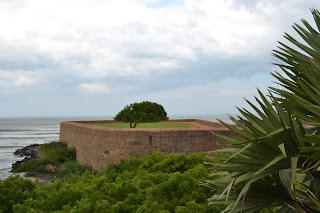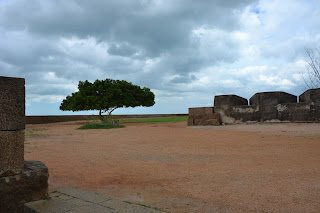In Tamil, Vattam means circle. This ancient fort is rectangular in shape and is found about 9 kms to the east of Kanyakumari. It is a recently restored coastal fort and is in a remarkable state of preservation. It is reminiscent of many such colonial European style forts that dot the coasts of India and Sri Lanka. But this was built in its current form by an Indian power, the Kingdom of Travancore in the 1700s. Most of the construction as we see it today, is attributed to Eustachius De Lannoy the French speaking, Belgian born adventurer, who commanded the Dutch force at the Battle of Colachel fought between the forces of the Dutch East India Company and Travancore in August 1741. This was one of the few instances when an Indian force decidedly defeated a European military force. De Lannoy was captured alive, became friends with the Travancore king Marthanda Varman and was made the commander of the Travancore Army reorganizing it and arming it along European military lines. But within the fort one finds clues that this was an ancient Pandian Fort that was built to protect the pearl fishery further east and De Lannoy built his fort over an existing one. You will find plenty of the ubiquitous fish symbols on ceilings and walls.
Even if you are not a history lover, this is a nice place to visit. It is a tranquil setting and has spectacular views of the ocean and coast. The beach here has black sand. To the north you see the southernmost parts of the Western Ghat mountains. You can see the Koodankoolam Nuclear Power plant and scores of windmills in the distance.




















No comments:
Post a Comment